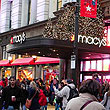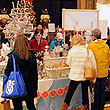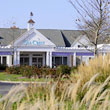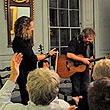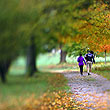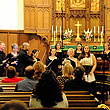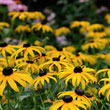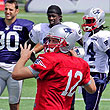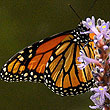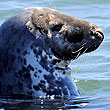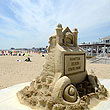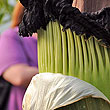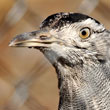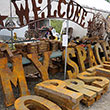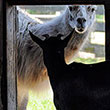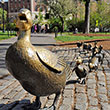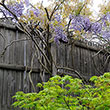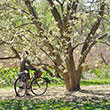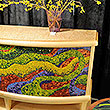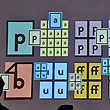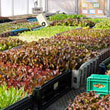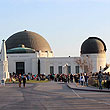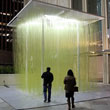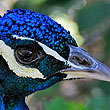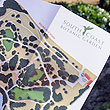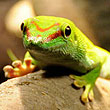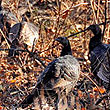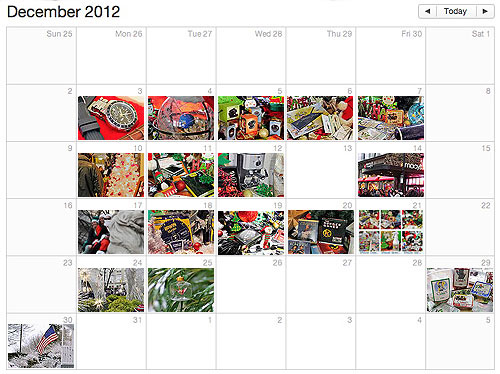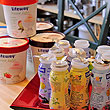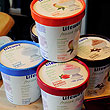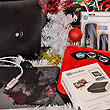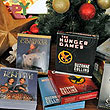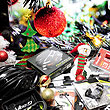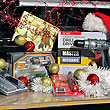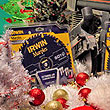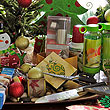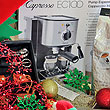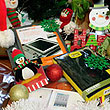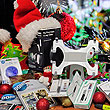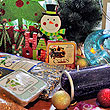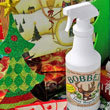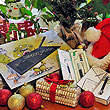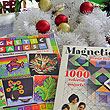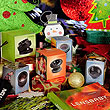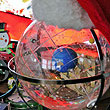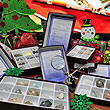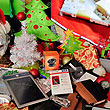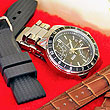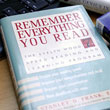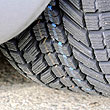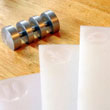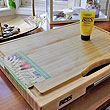The RainyDayKitchen folks had been wanting to make yogurt for years. This holiday season, we made room on our counter top and added a small batch yogurt maker to our collection of kitchen gear.
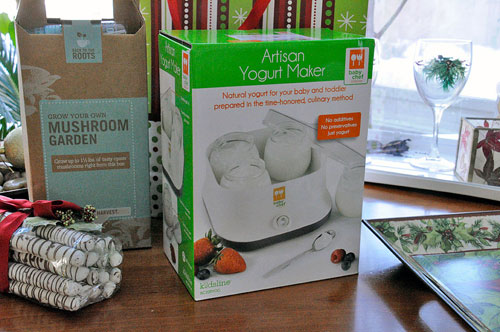
The Artisan Yogurt Maker from Kidsline is a compact unit and takes up hardly any counter space, but should make plenty of yogurt to meet our needs. The unit consists of a thermostat-controlled heating base, a see-through top lid, and four half-cup sized glass pots with covers.
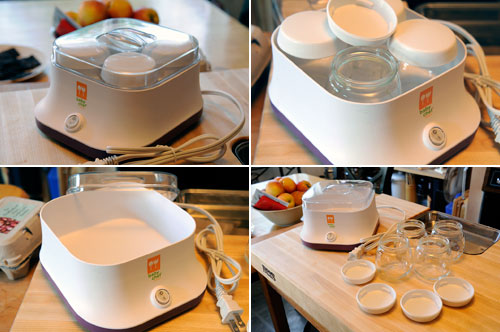
Yogurt is a kind of controlled souring of milk. Milk goes "sour" when bacteria convert milk suga (lactose) into lactic acid, giving the milk the distinctive tangy taste. The acid also interacts with the proteins in the milk to give it that firm texture.
If milk was just left out on the counter, the souring of the milk would be done by both "good" and "bad" bacteria. "Good" bacteria produce no harmful by-products to people as part the souring process. "Bad" bacteria will, well and we all know what havoc they can cause to the human digestive system.

Where to get the "good" bacteria? You only need to look to plain yogurt, as long as it contains "active cultures." Here is a list of the "good" bacteria found in popular commerical yogurts:
- Dannon - Lactobacillus acidophilus, Lactobacillus bulgaricus, Streptococcus thermophilus, Lactobacillus casei, Bifidobacterium
- Yoplait - Lactobacillus acidophilus, Lactobacillus bulgaricus, Streptococcus thermophilus, Bifidobacterium
- Stoneyfield - Lactobacillus acidophilus, Lactobacillus bulgaricus, Streptococcus thermophilus, Bifidus, Lactobacillus casei, Lactobacillus rhamnosus
- Chobani - Lactobacillus acidophilus, Lactobacillus bulgaricus, Streptococcus thermophilus, Lactobacillus casei, Bifidus
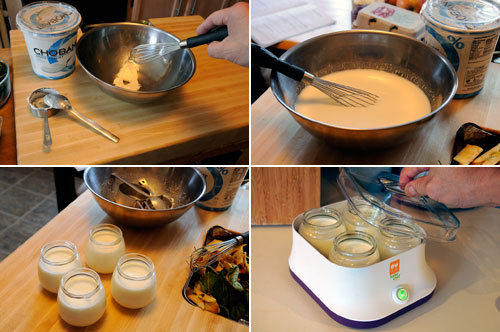
In order to allow only the "good" bacteria to feast on the milk sugar, the milk is heated to about 180°F to kill off ALL the bacteria. The heating process will also break down the milk proteins so that they set smoothly rather than form lumps. The milk is then cooled to about 110 °F, "good" bacteria (from existing plain yogurt) is added to the milk, the mix poured into the pots which are put into the base and covered, and the temperature maintained for 4 to 7 hours to allow mixture to ferment. Note that on the Artisan Yogurt Maker there is only one control (on/off) so the operation is completely manual. As the timing is not all that critical, this is fine. We just shut it off when things look about right. Simple.
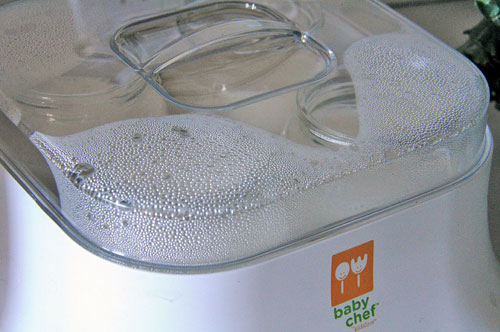

Yogurt is a great way to increase one's intake of probiotic microorganisms. Making it yourself is simple and just that much more awesome :-) We were amazed at how easy it was to do and how well the yogurt turned out on our first try. We have already made a few batches using whole and 2% milk. We are now trying to see if we can make some using non-dairy products such as almond and soy milk. We'll let you know how things turn out. [Permalink] - Making Yogurt
|


